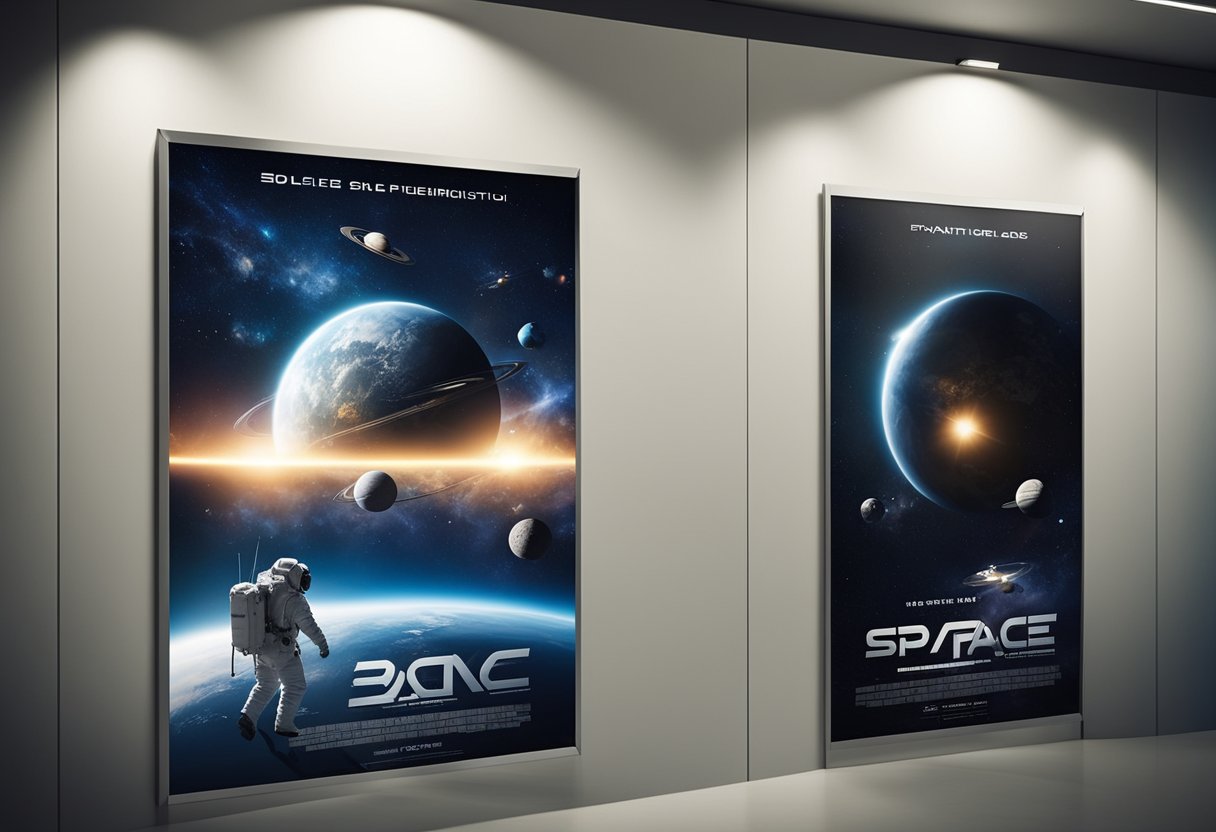
Space movies have long captured the imaginations of audiences around the globe, offering a visual spectacle that transports viewers beyond the confines of our planet. The allure of the unknown, coupled with the thrill of adventure and discovery, has consistently drawn people to cinemas. Yet, intriguingly, there’s a stark contrast between the enormous revenues generated by space-themed blockbusters and the funding allocated to real-world space exploration missions.

While box office sales for space films soar, often raking in hundreds of millions, if not billions, of pounds, actual space mission budgets tell a different story. It raises thought-provoking questions about the value we assign to entertainment versus scientific advancement. Despite the high costs of producing these cinematic experiences, particularly with state-of-the-art special effects, they pale in comparison to the vast sums required to fund space endeavours. Delving into this dichotomy, we begin to explore the broader cultural impact of space movies and their role in shaping public perception of space travel and exploration.
Even as space tourism begins to tread the boundary between fiction and reality, websites like SpaceVoyageVentures.com provide a glimpse into the burgeoning industry, bridging cinematic fantasy with the tangible promise of space travel. The relationship between the financial success of space films and the fiscal realities of space missions reflects the complexities of our aspirations and priorities.
From Georges Méliès’s pioneering 1902 film A Trip to the Moon to the record-shattering box office performances by the Star Wars franchise, space movies have continuously captivated audiences with their creative depiction of the cosmos.
We can trace the lineage of space cinema from its silent beginnings with A Trip to the Moon, known for its iconic image of a spaceship landing in the eye of the man in the moon. By the late 1960s, 2001: A Space Odyssey set a new standard for scientific realism, whilst weaving complex themes about humanity’s place in the universe. As we moved into the modern era, the Star Wars franchise revolutionised the genre with its special effects and expansive mythos. This shift, epitomised by the advancements in technology and storytelling, paved the way for films like Guardians of the Galaxy, which blend humour, action, and spectacle.
Directors like Stanley Kubrick and George Lucas have been instrumental in shaping our collective imaginations with their groundbreaking approaches to space cinema. Kubrick’s 2001: A Space Odyssey is a testament to his meticulous attention to detail and has inspired an entire generation of filmmakers. On the other hand, the expansive universes presented by franchises have had a lasting influence, not just on cinema but on pop culture at large. Star Trek not only thrived as a television series but has also seen considerable success on the silver screen, fostering a dedicated fanbase passionate about the exploration of space. Meanwhile, Douglas Adams’s The Hitchhiker’s Guide to the Galaxy, although originally a radio comedy, translated its irreverent take on space travel to film, linking the comic aspects of interstellar misadventures with philosophical insights.
Our explorations in cinema have mirrored the evolving aspirations of society, from the early days of space travel to the current developments at SpaceVoyageVentures.com, where the science fiction of yesterday edges closer to the science fact of today, chronicling an era where past imagination begins to converge with present reality.

Space films often captivate audiences with their stunning visuals and tales that challenge the vastness of space. Our focus will be on the financial outcomes achieved by these films, from major blockbusters to independent successes.
The Martian and Gravity have demonstrated remarkable global box office performances, reinforcing the appeal of space films. The Martian generated impressive earnings, securing its position as a box office success. Comparably, Gravity also witnessed substantial revenue, leveraging the allure of space with its thrilling narrative and visual splendour. These films highlight the potential of space-themed blockbusters to attract large audiences and achieve significant financial returns.
Independent space films, while often operating with lower budgets and less marketing clout, still manage to enthrall audiences and can yield substantial returns through box office and streaming platforms. Successful independent titles carve out a niche market and can transition from niche cinema screenings to global streaming services, thereby increasing accessibility and viewership. This demonstrates that not only high-budget productions but also well-crafted indie films can resonate with audiences and achieve notable success.
In our discussion, we observe that space films, whether big or small, play a significant role in shaping the film industry’s revenue landscape.
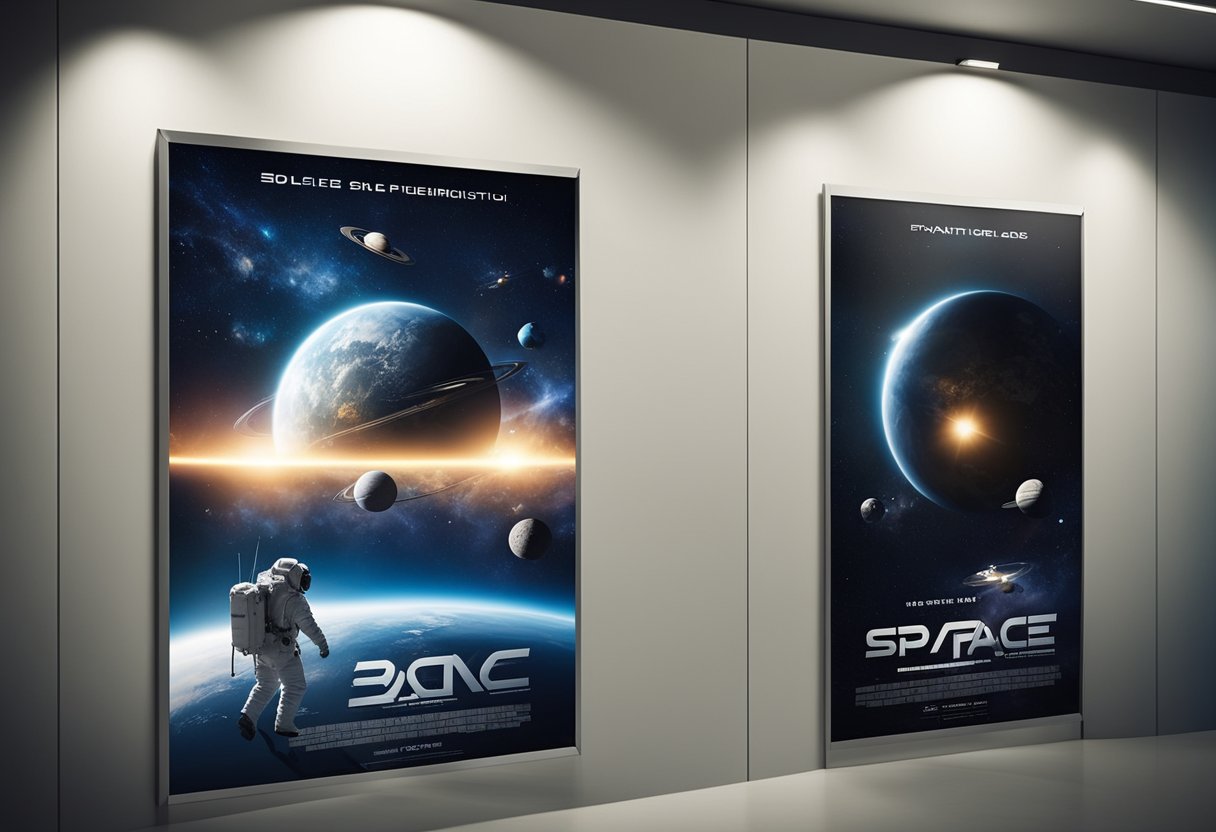
We often see space-based movies with budgets that reach astronomical figures, sometimes comparable or even surpassing the funding of actual space missions. In this section, we’ll provide a detailed comparison between the financial figures of film production costs and the funding allocated to space program activities.
Hollywood’s Reach to the Stars:
Comparing these numbers with real space endeavours offers us a tangible perspective on the economics behind our artistic and scientific pursuits.
NASA’s Milestones:
Space Race Era Budgets:
Here, we’ve juxtaposed cinema’s fictional quests into space with the tangible investment made by our governments in space exploration. Interestingly, some of the most ambitious cinematic productions come with a hefty price tag, sometimes on par with the costs of actual missions during the early days of the space race. However, as we look at the more recent budgets for space missions, we can see a substantial difference in scale.
For those intrigued by the concept of space tourism and its future, SpaceVoyageVentures.com provides insights into what might soon be a reality for civilians dreaming of stars.

In this discussion, we delve into the indispensable role special effects play in the realm of space cinema, vital for both reflecting scientific realism and pushing the bounds of imagination.
Special effects have undergone significant evolution, propelling narratives in science fiction to new heights. When we consider films such as Interstellar, practical effects and CGI blend to create sequences that not only captivate audiences but also adhere to astrophysical accuracy. From depicting the warping of space-time near a black hole to simulating the dust storms of an alien planet, the technological strides in VFX echo the advancements in our understanding of the cosmos.
The creation of believable space atmospheres in cinema is a testament to the prowess of special effects teams. Take Gravity, for instance, which employed groundbreaking techniques to manifest the perilous void of space. These effects, while serving to immerse and thrill, foster a keen interest in space exploration and an appreciation for the stark realities astronauts face. This intertwining of art and science enriches our grasp of space cinema’s contribution to entertainment and education alike.
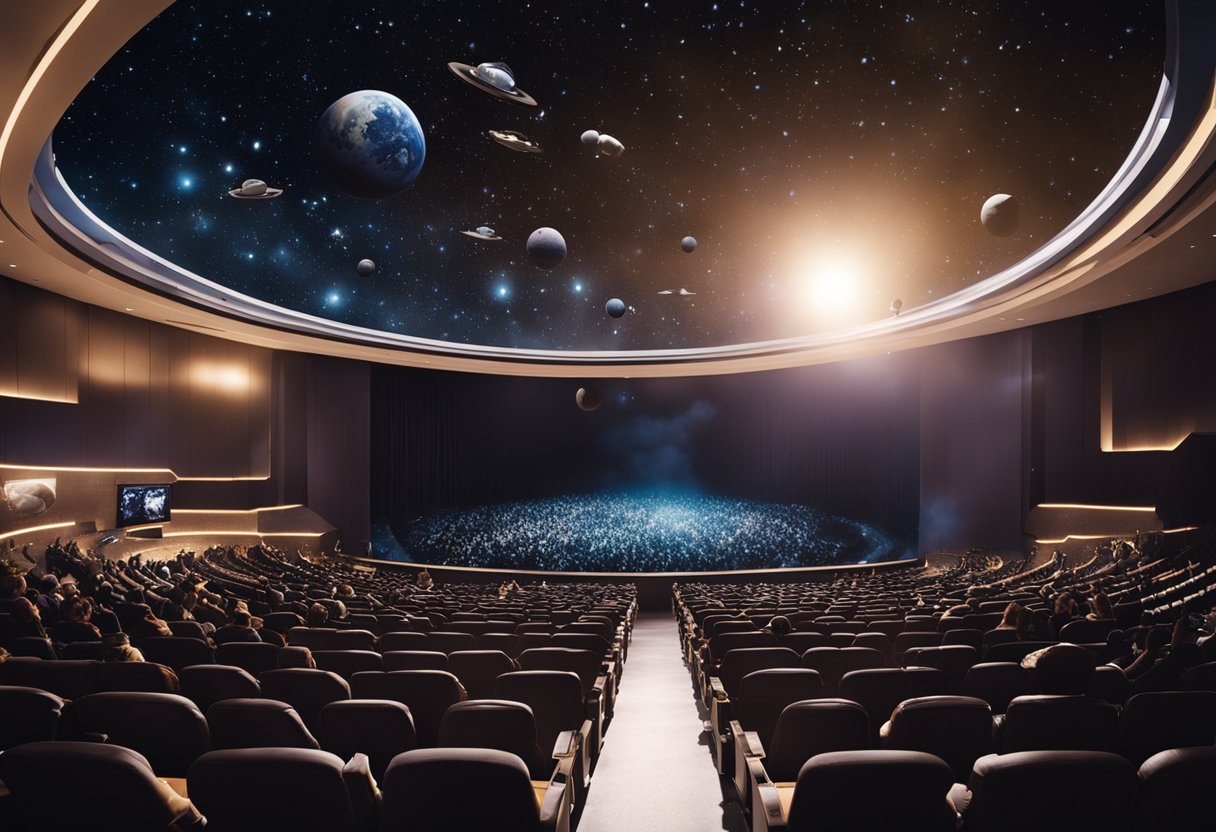
Space movies often captivate audiences by portraying the grandeur and peril of cosmic exploration. They examine our innate desire to push boundaries and confront the vast unknown.
In our journey through the cosmos, films such as Apollo 13 underline the real-life risks and challenges that astronauts face. The indomitable human spirit is a central theme, as characters navigate life-threatening scenarios with ingenuity and resilience. Efforts to sustain life against the cold vacuum of space often drive narrative tension.
Confrontations with extraterrestrial life encapsulate our fears and fascination with aliens. 2001: A Space Odyssey explores contact with otherworldly intelligence, questioning the ramifications for humanity. Whether through enlightening exchanges or hostile encounters, these interactions probe our understanding of life and our place in the universe.
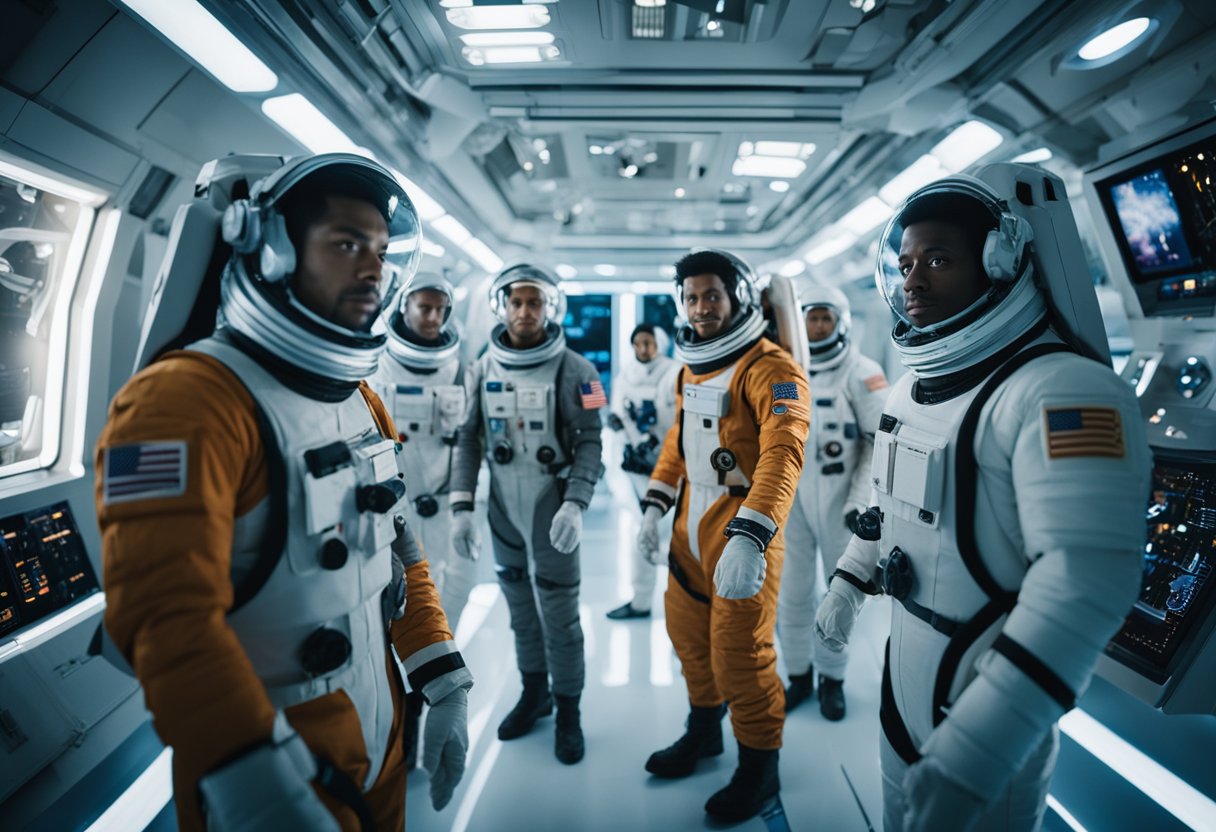
In recent years, the space film genre has begun to reflect a more diverse picture of those who venture beyond our atmosphere. This change not only better represents our society but also enriches the storytelling within the genre.
Hidden Figures stands out as a pivotal film, showcasing the vital role of women, particularly African American women, in space exploration. Starring Taraji P. Henson, Octavia Spencer, and Janelle Monáe, the film highlights the contributions of female mathematicians at NASA during the Space Race. These women’s stories affirm the integral presence and influence of women in the field, which had been underrepresented in space films previously.
Sigourney Weaver in Aliens as Ellen Ripley, remains an iconic figure in the portrayal of women in space on film. Her character embodies strength, intellect, and resilience, challenging the traditionally male-dominated trope of space explorers.
The diversity of astronauts in films has often mirrored the diversity we strive for in space exploration programmes. Star Trek is a prime example, offering an aspirational vision of a future where humans of diverse backgrounds and extraterrestrial beings work together to explore space. The starship Enterprise’s crew itself is an ode to inclusion, transcending race and species. We can see the influence of such portrayals in the way the space sector is evolving, where agencies like NASA aim for greater diversity among their ranks.
Portrayals of aliens, on the other hand, have been varied, ranging from the monstrous creatures in Aliens to the more benevolent Vulcans of Star Trek. These depictions symbolise our fears and hopes about what lies beyond, reflecting our desire for discovery and the implicit wish that amidst the galaxy’s vastness, there might be intelligences other than our own that are not so different from us.
Overall, our evolving library of space films serves not just as entertainment but as a reflection of our aspirations for a spacefaring civilisation that recognises and celebrates diversity. It also parallels with platforms like SpaceVoyageVentures.com, where the future of space tourism paints a picture of an inclusive endeavour accessible to all humankind.

We explore the impact of space exploration dramatised in cinema, focusing on the intense odysseys undertaken and the profound psychological questions encountered.
Films like Apollo 13 accurately convey the perilous nature of space travel and the fine line between success and catastrophe. Similarly, “Europa Report” showcases a fictional journey to a moon of Jupiter, capturing the distinct blend of hope and danger inherent in distant space missions. These cinematic experiences often mirror the grand scale of our solar ambitions seen on platforms like SpaceVoyageVentures.com, but in a dramatised narrative.
The Right Stuff and Moon delve into the psychological pressure of being an astronaut, tackling the immense mental fortitude required in the void of space. On the other hand, films such as Solaris and Sunshine introduce ethical questions that challenge the essence of our humanity when confronted with the unknown and the cosmic sublime. They exemplify the inner turmoil and moral quandaries one may face when isolated from Earth, offering a viewing experience that resonates with the uncertainties of our real-life space endeavours.

We must acknowledge the fact that while space films often delve into the unknown with a serious and contemplative tone, there’s a whole sub-genre that takes a lighter approach. Through parodies, satires, and family-friendly adventures, these films have not only provided us with laughter but have also had a monumental success both at the box office and in the hearts of viewers, occasionally even surpassing the funding for actual space missions.
Spaceballs and Guardians of the Galaxy are two such films that have brilliantly infused comedy with space travel. Utilising wit and satire, they’ve lampooned the more traditional space voyage narratives. Spaceballs, a clear parody of the Star Wars saga, plays on the familiar tropes for comedic effect, while Guardians of the Galaxy combines action and sharp humour, adding a satirical twist to the superhero genre. The success of these films not only underscores a love for laughter but signifies the public’s embrace of alternative, comedic perspectives on space exploration.
Family-friendly films like WALL-E and Zathura: A Space Adventure bring a lighter touch to the realm of space adventure, ensuring that the lure of the cosmos is accessible to audiences of all ages. Produced by Pixar and Disney, respectively, these films have attracted substantial box office success. WALL-E subtly introduces the topic of environmentalism against a space backdrop, charming audiences with its lovable robot protagonist. Zathura, on the other hand, offers a thrilling yet amusing journey through space from the safety of a suburban living room, capturing the imagination of younger audiences. We can see through these films the potential to engage a wider demographic in space culture, which is a testament to their clever and endearing storytelling.
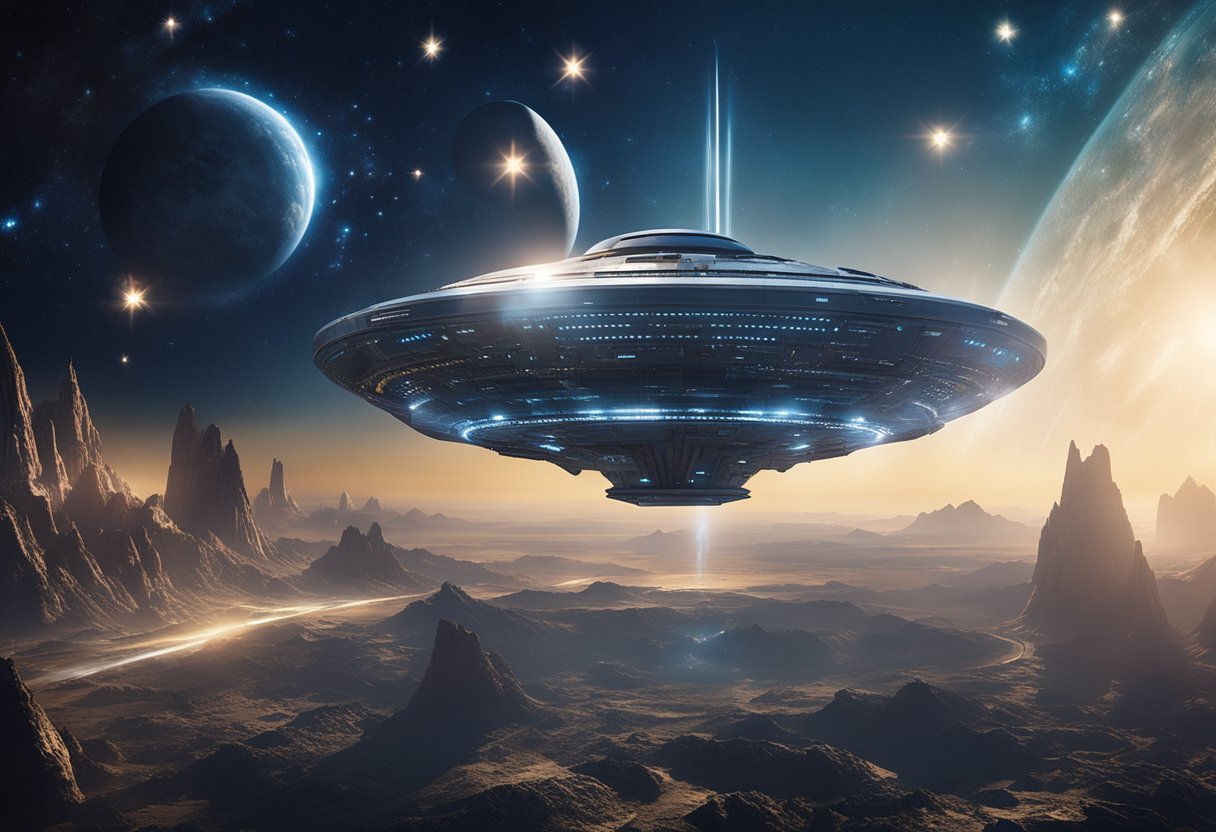
In the realm of cinema, science fiction often mirrors our aspirations and scientific possibilities. Our understanding and anticipation of space exploration are shaped significantly by these films, as they either closely adhere to scientific facts or take creative liberties to tell a compelling story.
Hard science fiction focuses on scientific accuracy and technical detail. Films like The Martian and Apollo 13 exemplify this subgenre by incorporating real science into their narratives. The Martian, for instance, showcases accurate depictions of Mars’ terrain based on data from NASA probes, emphasising the harsh conditions and the protagonist’s struggle to survive using real-world science.
Contact, adapted from Carl Sagan’s novel, incorporates the genuine workings of radio telescopes and the concept of communication with extraterrestrial intelligence. These films often resonate with our team at SpaceVoyageVentures.com, as they reflect scientific principles similar to those we disseminate about possible space tourism ventures.
Conversely, some space films take creative liberties to craft more dramatic narratives. Interstellar delves into more speculative science, using concepts like black holes and wormholes to propel its story. While these elements are grounded in theoretical physics, the film extends beyond our current technological capabilities.
This form of storytelling can inspire audiences and elevate our collective imaginations, painting scenarios that, while not feasible at present, could be within humanity’s reach in the future, just as our aspirations at SpaceVoyageVentures reflect a commitment to turning science fiction dreams into tomorrow’s reality.
We recognise the substantial effect space movies have in shaping public and scientific perception regarding space exploration. Not only do these films increase general interest, they also inspire the next generation of scientists.
Space movies often serve as a catalyst for young viewers, sparking a lifelong fascination with space and science. Films such as “The Martian” and “Interstellar” present a future where travel and life on Mars are tangible, influencing some of our brightest minds to pursue careers in STEM fields. They see astronauts overcoming challenges and NASA personnel solving complex problems, which can instil a desire to be part of real-life space missions.
The success of space-themed box office hits can correlate to increased public support for real-world space missions. When audiences watch movies highlighting humanity’s adventures beyond Earth, interest in NASA’s endeavours, like the Mars rovers or the Artemis program, often surges. This heightened awareness can potentially influence funding decisions and public enthusiasm for space tourism initiatives, akin to what’s being documented on SpaceVoyageVentures.com.
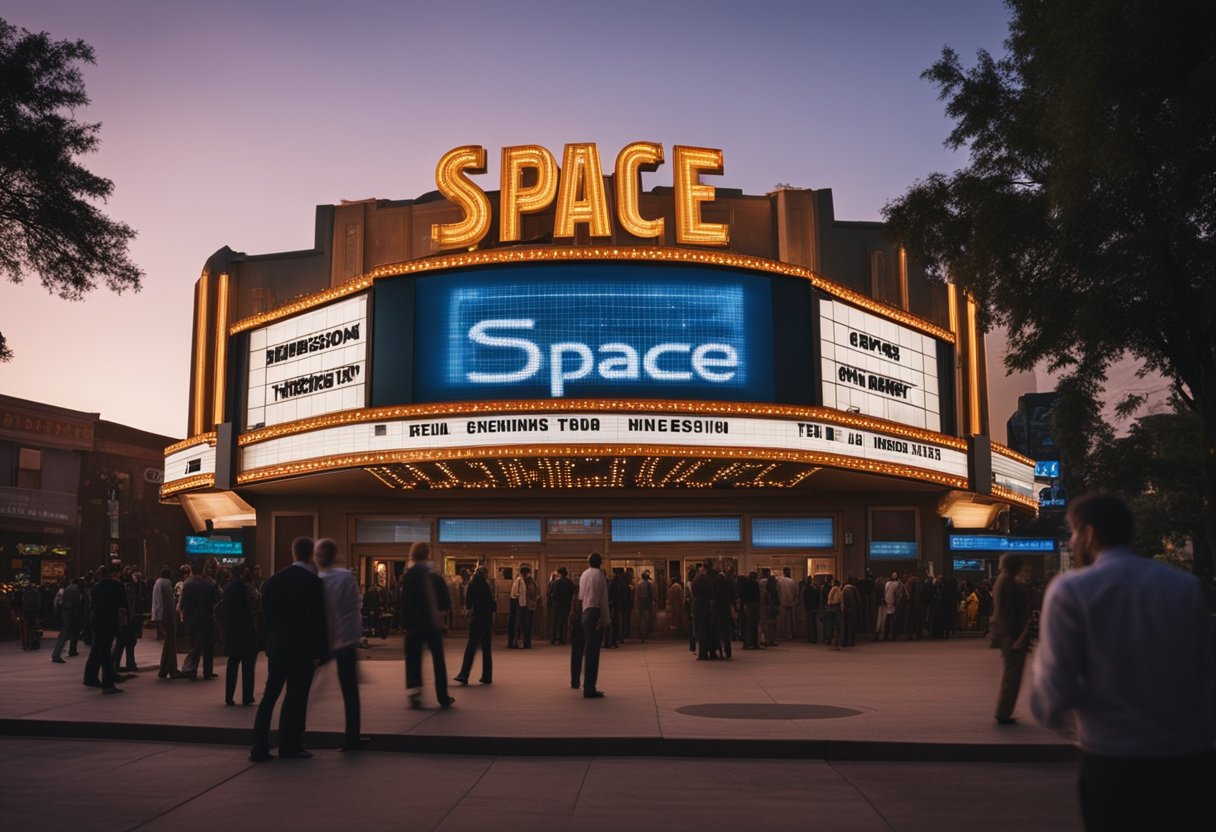
As we look ahead, the space genre in cinema is poised for thrilling advancements in both storytelling and production technology.
We expect a rich slate of space-themed films, including anticipated sequels from the iconic Star Wars franchise, bolstering the genre’s footprint. Audience appetites for interstellar adventures remain high, suggesting that these upcoming releases could replicate the past box office successes. With directors like Christopher Nolan at the helm of recent space epics, the appetite for high-concept narratives in combination with visual spectacle shows no sign of waning.
The trend of weaving space exploration with intricate plots is likely to continue, with franchises often expanding their universes through prequels, sequels, and spin-offs. The success of these films also has a symbiotic relationship with real-world ventures, as seen with early space tourism platforms like SpaceVoyageVentures.com, which fuel public interest in space travel and, conversely, are promoted by the popularity of space cinema.
The evolution of filmmaking technology has always pushed the boundaries of how space is depicted on screen. We anticipate a surge in the use of Virtual Production methods, which allow for more intricate and immersive space environments. Real-time rendering and LED volumes offer filmmakers unprecedented control over the cosmic landscapes within their narratives.
Moreover, advances in VFX (Visual Effects) continue to enhance our ability to portray the vastness and beauty of space, creating more lifelike depictions of other worlds. The utilisation of new technology in filmmaking not only elevates the viewer’s experience but also provides storytellers with a more vast canvas on which to craft compelling narratives. With these tools, the stories of space can be told with greater authenticity, perhaps even influencing our collective perspective on space exploration and travel.
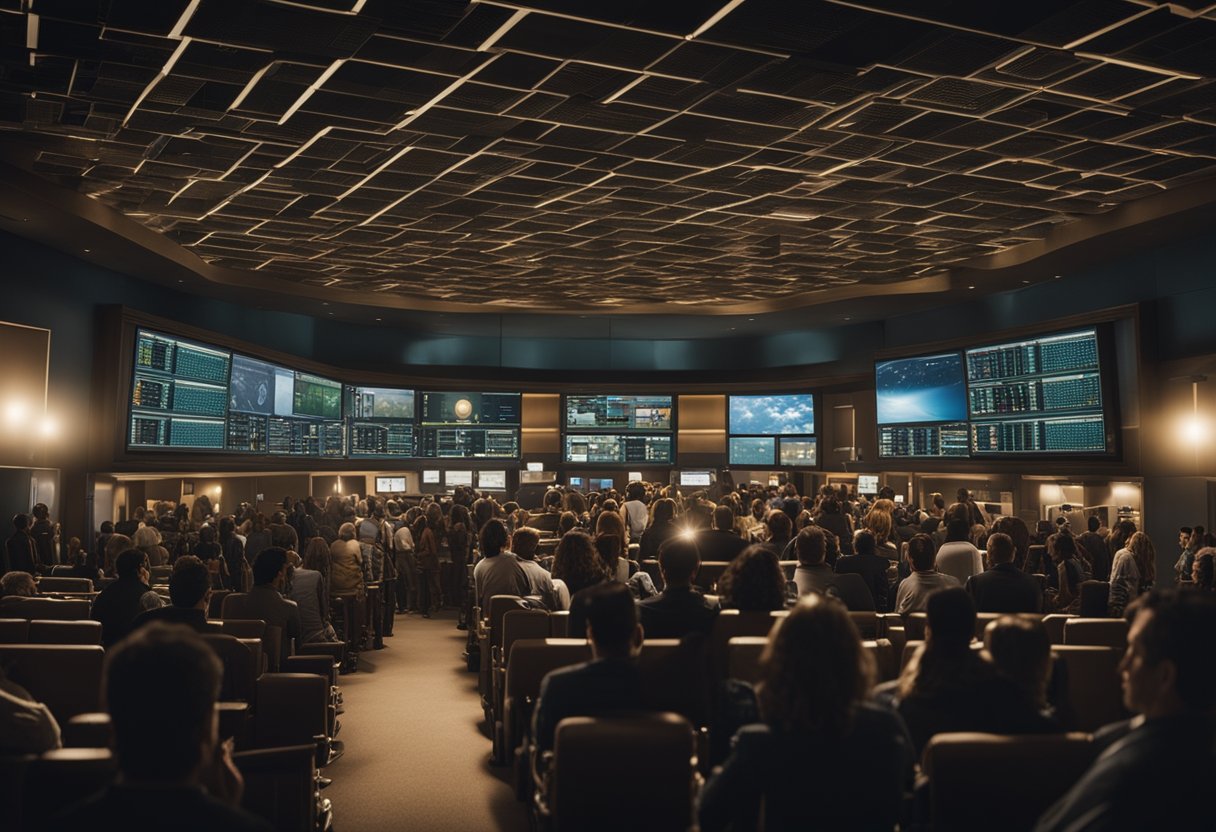
In exploring the dynamic between Hollywood’s interstellar fantasies and real-world space exploration, we uncover some intriguing insights regarding their financial landscapes.
Historically, space-themed films like the instalments of the Star Wars franchise have consistently dominated the box office, drawing massive audiences and generating substantial revenue.
The revenues from space exploration films can be quite substantial but usually do not compare to the enormous budgets required for actual space missions. For instance, while a blockbuster movie might generate profits in the range of hundreds of millions, space mission budgets can run into the billions.
The highest-grossing science fiction franchises, such as Star Wars and Marvel’s cosmic-centric films, have not only set benchmarks for box office earnings but also pushed the boundaries of special effects and storytelling within the industry.
The financial success of a science fiction film can indirectly influence space mission funding by increasing public interest in space exploration, which may lead to a boost in government funding or private investment in space initiatives like those on SpaceVoyageVentures.com.
Factors contributing to the high cost of producing space adventure films include the need for cutting-edge visual effects, extensive post-production work, and the assembly of a high-profile cast, all of which are investments to make the fictional journeys into space as believable and engaging as possible.
Although box office revenues from space movies are significant, they are generally insufficient to single-handedly fund real-world space exploration initiatives, which often require financial inputs from multi-billion-pound governmental and private entities to cover their expansive costs.